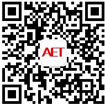China’s RFID Market Set to Double by 2014
0赞After years of development, China’s radio-frequency identification (RFID) market has entered a phase of prodigious size and growth, with revenue set to more than double from 2009 to 2014, according to the China market research firm iSuppli, now part of IHS Inc. (NYSE: IHS).
China’s RFID market, consisting of tags, readers and software/middleware, is estimated to have grown to $1.4 billion in 2010, up 22 percent from $1.1 billion in 2009. By 2014, the RFID market will reach $2.4 billion—more than double the total from 2009.
RFID employs radio waves to transfer data between a reader and an electronic tag attached to an object, allowing easy identification and tracking. Regarded by many as the successor to the ubiquitous universal product code (UPC) barcode system, RFID provides several advantages compared to UPC in logistical applications, such as eliminating the need for contact or line of sight in order to conduct the transfer of identification or tracking information.
“The rise of China’s RFID market is the result of rising demand from applications in transportation, warehouse logistics, electronic payment, medical equipment tracking, food security systems, asset management and more,” said Vincent Gu, senior analyst for China research at iSuppli. “At the same time, technology integration in the RFID market has been advancing. Many enterprises have begun to study technical innovations designed to broaden the applications for RFID devices, including mobile payment.”
Cost Barrier
The cost of RFID remains a barrier to its acceptance, despite the technology’s many advantages compared to UPC. But thanks to the rapid development of integrated circuit manufacturing technology, RFID chip costs are continuing to decline, with the price for many Chinese high-frequency RFID cards now down to about one yuan
Prices of tagged products are even cheaper and also are expected to drop further. iSuppli forecasts that as the technology matures, so will manufacturing of the devices, which will allow the devices to reach economies of scale.
Red Tags
In 2010, the dramatic decrease of second-generation RFID shipments resulted in a sharp decline in tag sales, with the sales of readers surpassing those of tags to date. Thanks to the Shanghai Expo and Guangzhou Asian Games, however, the two projects have managed to account for 48 percent of the entire market.
